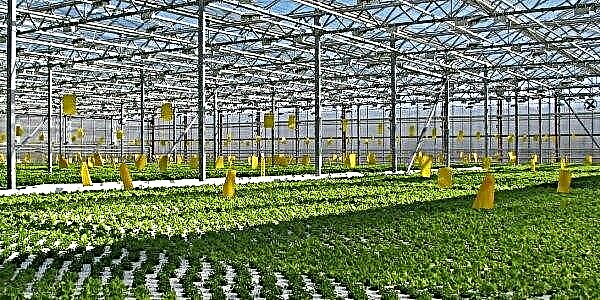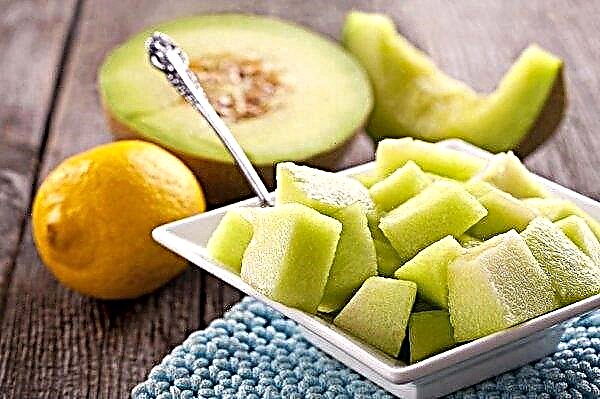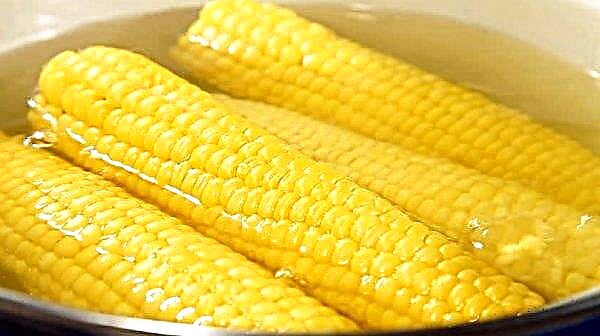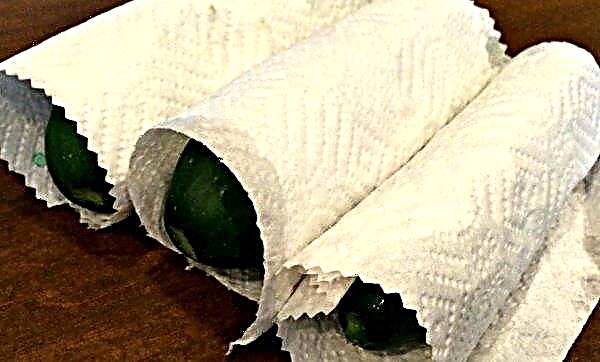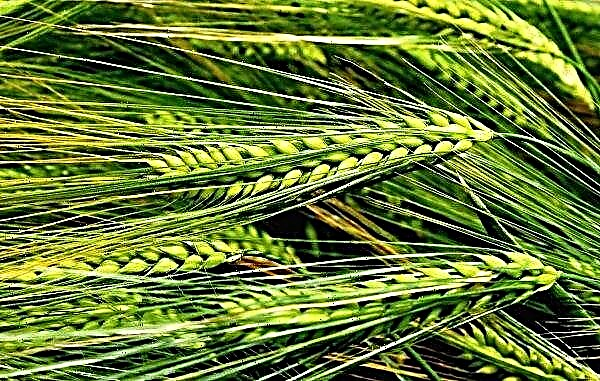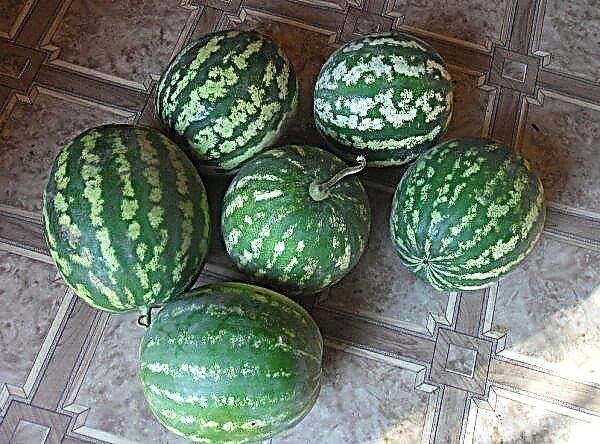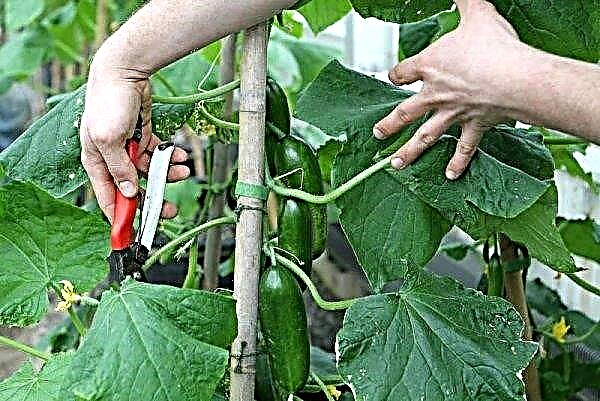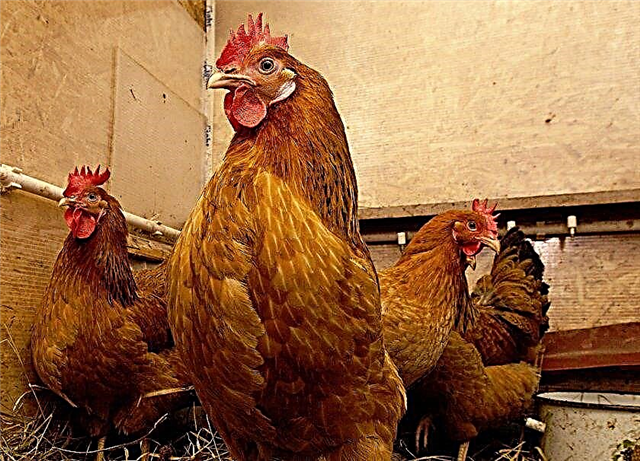Carrots - one of the most common local root crops, which is found as an ingredient in many culinary dishes and is very popular among gardeners. When growing it, one has to face many questions, including the need to choose the right site for a rich harvest. What kind of soil is needed for carrot beds and how to process it properly will be discussed further.
What soil does carrots like
Carrots do not belong to demanding plants and bear fruit even in poor conditions, however, the quantity and quality of its fruits directly depend on the mechanical and chemical composition of the soil.
Chemical composition
Carrots should be planted in a neutral or slightly acidic environment: the optimal pH should be 5.6–7. The root crop is also actively growing and developing in a well-fertilized nutrient soil with a humus content of 4% and above.
Mechanical composition
Not only the quality of the crop, but also the shape of the fruit depends on the mechanical composition of the soil. In heavy clay or insufficiently cultivated soils, small, branched, non-marketable root crops with low palatability will grow. Accordingly, for planting the described culture, you should choose a clean area that does not contain large stones or residues of plant roots. 
The soil should be light, loose, loamy or loamy with good permeability. A small proportion of sand in the soil will provide high quality and excellent sweet taste of the future crop. The optimum soil density for carrot beds is 0.65 g per 1 cubic meter. see. There is a simple folk method for determining the type of soil. To do this, add water to a handful of land from the selected site to the state of the test and try to mold the ball, sausage and bagel.
Results will show the following:
- plastic clay soil easily changes and holds any shape;
- loamy forms the first two figures, and the bagel cracks;
- the middle loam makes the ball and sausage blind, but the bagel breaks up;
- only a ball can be formed from light loam;
- sandy loam soil allows you to blind only a thin cord;
- sandy soil crumbles in the hands.
Important! Take a lump of earth from the selected site and squeeze it in a fist, a “fat” black fingerprint is a sure sign of black soil.
How to properly prepare the soil for planting carrots
Preparation of the soil for planting the crop in question necessarily includes the correct selection of the site, determining the characteristics of the soil, disinfecting the land and making all the required additives. Site preparation begins in the fall, at the end of the garden season. It consists in cleaning the area from organic residues and digging to a depth of 20–25 cm.

Good predecessors
Harvest of carrots depends on what garden crops grew on this site last season.
- Good predecessors of culture are:
- potatoes;
- cabbage;
- Tomatoes
- cucumbers
- legumes;
- onions and herbs.
Find out more:

- It is undesirable to plant a root crop after the following crops:
- parsley;
- parsnip;
- celery;
- fennel;
- zucchini.
A favorable environment for carrots - garlic, tomatoes, legumes and lettuce, but beets, cucumbers and dill in neighboring beds are best not grown.
Important! On the same site, carrots can be planted with an interval of 4 years.
Determination of soil acidity
Since the pH level of the soil is crucial for the quantity and quality of carrots, it is imperative to determine it in the area where planting is planned.
Acidity is determined in many ways.:
- pH meter
- litmus indicator paper;
- folk methods.
Video: How to determine the acidity of the soil
The easiest, but not always affordable way is to use a pH meter. One has only to place its indicator in the ground and read the result.
It is easy to find out the acidity of the soil with litmus strips, which you can buy in a specialized store. Usually they are a set that includes litmus papers treated with special reagents, and a scale for determining the pH level.

How to use litmus strips:
- Take a sample of the soil of the site and place it in a glass container.
- Add distilled water to the tank in the ratio of 1 part soil to 4-5 parts water.
- Stir thoroughly, stand for 15 minutes, mix again and wait 5 minutes.
- In the resulting solution, dip the litmus test for 2 seconds and compare its color with the pH scale.
Video: How to determine soil acidity with litmus paper
The appearance of the site can also tell about the pH level of the earth.
Signs of acidic soil:
- a whitish layer in a fresh hole 20–25 cm deep;
- rusty color and brownish sediment in stagnant water;
- rainbow film on the water.
If the following plants grow on the plot, the earth has a lowered pH level:
- garden and horse sorrel;
- horsetail;
- asterisk
- moss;
- plantain;
- daisy;
- creeping buttercup;
- white belly sticking out;
- sedge;
- fragrant bell.
Did you know? Among carrots, there are champions too: the longest (5.84 m) appeared in Britain on the plot of farmer Joe Atherton, and the heaviest (8.61 kg) grew up in Alaska.
Alkaline soil is preferred by wheat grass, nettle, burdock, clover, field bindweed and alfalfa. But to dream, coltsfoot and dandelion choose neutral or slightly weak acid fertile soil. Another popular method is to cultivate the land with vinegar. To do this, take 1 tbsp. l soil, place on glass and pour on it a small amount of 9% table vinegar.
The results will be as follows:
- active foaming - alkaline environment;
- small bubbles - a neutral environment;
- without reaction - acidic environment.
Video: Determination of soil acidity folk remedies
Earth moisture determination
Determination of soil moisture will prevent planting from excessive moisture, decay, leaching of valuable trace elements and poor access of oxygen to root crops. Soil moisture can be measured with a tensiometer, electrical resistance sensor, or household moisture meter.
In the absence of these devices, you can use folk methods. From a depth of 10–20 cm, you should take a soil sample and tightly squeeze a lump in your hand.
Results may be as follows:
- the earth crumbled - humidity up to 60%;
- fingerprints are visible on the lump - humidity is about 70%;
- lump disintegrated from light compression - humidity 70–75%.
- moisture appeared on a piece of land - humidity more than 80%;
- lump is dense and leaves a wet mark on filter paper - humidity is about 85%;
- moisture oozes out of the lump - humidity 90% or more.
Soil disinfection
Another important event is the disinfection of the land where carrots will grow. This will prevent the spread of infections, viruses and fungi left over from the previous season. Various methods are used to disinfect the soil.
Video: How to disinfect the soil
Agrotechnical:
- mandatory harvesting of plant residues at the end of the planting season;
- compliance with the rules and planting schemes, the absence of plant thickening;
- breakdown of the plot into narrow beds for good aeration and a convenient approach for processing planting;
- timely and balanced dressing to strengthen plant immunity.
Biological:
- use in small areas instead of chemistry of drugs with microorganisms;
- if necessary, the introduction of the biological fungicides "Trichodermine", "Bactofita", "Fitosporin", "Bactofita";
- double site treatment - in summer and autumn.
Chemical:
- autumn cultivation of land by Bordeaux fluid (3%);
- spring treatment up to 10 cm deep with copper chloride (4%) or Oksikhom (2%);
- the use of Bravo and Quadris preparations during planting.
Important! Chemicals should be used only in the absence of the effectiveness of more gentle methods.
Fertilizing soil
The type and amount of fertilizer applied depends on the type of soil. So, clay soils begin to fertilize in the fall, the site is dug up by one bayonet shovel (about 25 cm) with the addition of peat and sawdust (3 kg per 1 sq. M).
Total for the season per 1 square. m plot contribute:
- coarse sand - 0.5 buckets;
- organic matter (humus) - 5 kg;
- wood ash - 0.3 kg;
- lime (for acidic soil) - 0.5 kg;
- mineral complex (nitrophoska or superphosphate) - 1 tbsp. l
Video: The result of fertilizing carrots with sawdust
Loamy soils are fertilized in the same way, but no sand is added. In areas with sandy soils, fertilizers are applied in stages at different depths.
Seasonal feeding rate per 1 sq. m plot:
- organic matter (rotted manure) - 4 kg;
- lime (for acidic soil) - 0.4 kg;
- "Agricola-4" - 1 tbsp. l
Half of this amount is applied in the autumn to a depth of 25 cm, the rest - in the spring to a depth of 15 cm. Also, when sowing, a small amount of wood ash should be added.
If you have to plant carrots in acidic soil, you should first treat the land with fluffy lime (1 cup per 1 sq. M) and wood ash and only then feed it with mineral and organic fertilizers. For a plot with chernozem, 2 tbsp is sufficient. superphosphate per 1 sq. km. m per season.
Video: Fertilizing soil in the fall
Carrot care
Carrot care in the open field is as follows:
- Watering. When watering plantings, it is important to maintain balance - the plant should receive the necessary amount of liquid, but at the same time avoid over-saturation with water. Excessive watering is especially dangerous during the period when root crops already have long roots. In this case, excess water can lead to deep cracks on the surface of the carrots and even its decay. Therefore, watering should not be frequent, but regular. Many gardeners recommend almost completely abandoning the procedure before harvesting.
- Thinning. Since carrots are planted with seeds, it is impossible to accurately predict the distance between plants. As it develops, it becomes clear that some bushes are too densely located and interfere with each other's development - then the carrots grow small, thin and poorly stored. Accordingly, carrots should be thinned out on about 12 and 22 days after emergence.
- Loosening and weeding. These activities are often carried out simultaneously with thinning. Weeding is necessary so that weeds do not clog carrot sprouts and valuable substances from the soil. Loosening improves air access to the roots, which fruitfully affects the development of plants.
Did you know? Carrots can be a temporary replacement for a toothbrush. The root crop perfectly cleanses tooth enamel, massages the gums and prevents the occurrence of caries and periodontal disease.
How and when to clean carrots?
By maturity, the culture is divided into early, middle and late. Depending on the time of planting and the climatic zone, early root crops begin to dig around the middle of summer. It should be noted that early and mid-ripe fruits are suitable only for current use.

Seeds of culture are selected depending on what purpose the gardener pursues. If root crops are grown for long-term storage (for the winter), then late-ripening varieties should be purchased. Their collection usually lasts the first 2-3 weeks of autumn.
Carrots that are harvested too early usually have an unexpressed taste and are poorly stored. If it is overexposed in the ground, then this will also negatively affect its taste and may lead to secondary growth or the appearance of rot.
The main signs of full ripeness of carrots are yellowed lower leaves and small light roots-strings on the fruits. If cracks are found on the carrots, then such instances should be removed quickly.
Video: How to determine the deadline for harvesting a morkvi
Small carrots can be removed from the garden by hand, but be careful not to break the root crop. Larger specimens should be lightly dug up and then gently pulled out by the stems. If the soil is too dry, then a day before harvesting it should be moistened a little.
After collecting the entire crop, carrots are cleaned of the remnants of the earth, and the tops are cut. Subject to all the rules of preparing the soil and caring for planting carrots, you can collect a rich harvest of strong sweet fruits, which will pleasantly please yourself and your family.

